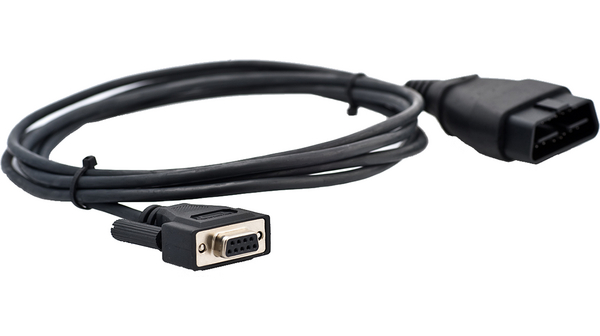OBDII
OBDII vehicle diagnostic modules and adapter cards
Manufacturer: ['ghi-electronics', 'kvaser']
series introduction
# Unveiling the OBDII Product Series: Revolutionizing Vehicle Diagnosis and Monitoring
## Introduction
In the ever - evolving landscape of automotive technology, the On - Board Diagnostic II (OBDII) product series stands as a cornerstone of vehicle health management. OBDII is not just a single device; it is a comprehensive set of products designed to interface with a vehicle's internal computer system, providing a wealth of information about the vehicle's performance, emissions, and overall health. This introduction will delve into the history, functionality, benefits, and applications of the OBDII product series.
## A Brief History of OBDII
The roots of OBDII can be traced back to the 1980s when concerns about vehicle emissions and the need for standardized diagnostic systems led to the development of the first - generation On - Board Diagnostic (OBD) systems. These early systems were limited in their capabilities and varied widely between different vehicle manufacturers.
In response to the need for a more unified and comprehensive diagnostic solution, the OBDII standard was introduced in the 1990s. It was mandated by the United States Environmental Protection Agency (EPA) for all vehicles sold in the country starting in 1996. Since then, OBDII has become a global standard, adopted by vehicle manufacturers around the world to ensure consistent and reliable vehicle diagnostics.
## How OBDII Works
At the heart of the OBDII product series is the OBDII port, which is a standardized 16 - pin connector found in most vehicles built after 1996. This port serves as the gateway between the vehicle's internal computer, known as the Engine Control Unit (ECU), and external diagnostic tools.
The ECU continuously monitors various sensors throughout the vehicle, such as those measuring engine temperature, oxygen levels in the exhaust, and fuel - air mixture. When a problem is detected, the ECU stores a Diagnostic Trouble Code (DTC) in its memory and may illuminate the Check Engine Light (CEL) on the vehicle's dashboard.
OBDII products, such as OBDII scanners and code readers, can be connected to the OBDII port to retrieve these DTCs. These devices communicate with the ECU using a standardized protocol, allowing them to interpret the codes and provide detailed information about the nature of the problem. Some advanced OBDII products can also access real - time data from the vehicle's sensors, such as engine RPM, vehicle speed, and coolant temperature.
## Key Features of OBDII Products
### 1. Diagnostic Trouble Code (DTC) Retrieval
One of the primary functions of OBDII products is to retrieve DTCs from the vehicle's ECU. These codes are standardized across all OBDII - compliant vehicles, making it easier for mechanics and vehicle owners to identify and troubleshoot problems. For example, a code P0171 indicates a lean fuel - air mixture in the engine, which could be caused by a variety of issues such as a faulty oxygen sensor or a vacuum leak.
### 2. Real - Time Data Monitoring
Many OBDII products offer the ability to monitor real - time data from the vehicle's sensors. This feature allows users to keep an eye on important parameters such as engine performance, fuel efficiency, and emissions levels. For instance, a mechanic can use real - time data to diagnose a misfiring engine by monitoring the individual cylinder performance.
### 3. Emissions Testing
OBDII products play a crucial role in emissions testing. They can check the status of the vehicle's emissions control systems and determine if the vehicle is likely to pass or fail an emissions test. Some OBDII scanners can even perform pre - test checks to identify potential emissions - related issues before the vehicle is taken for an official test.
### 4. Resetting the Check Engine Light
Once
Images for reference

Image Preview